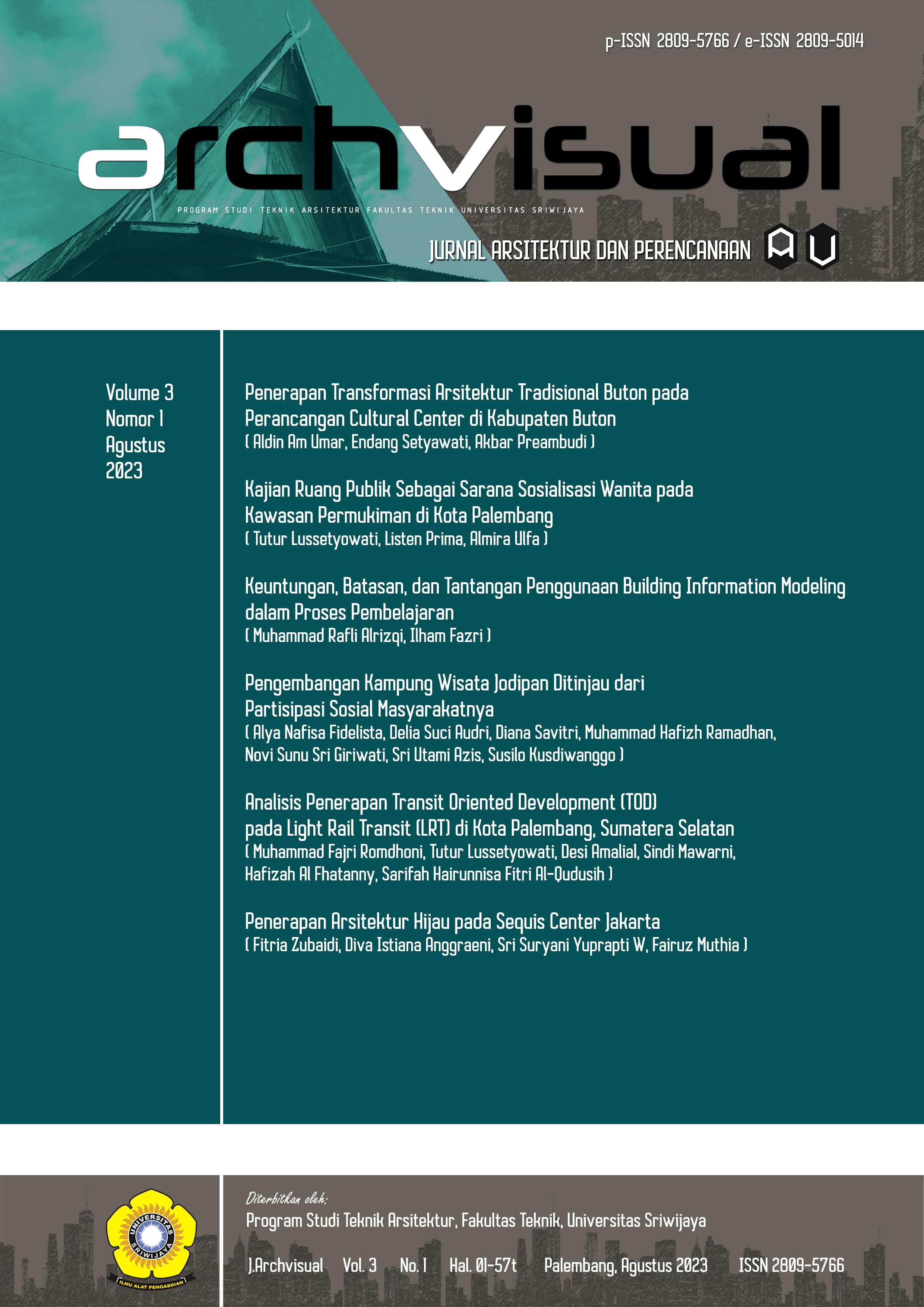Keuntungan, Batasan, dan Tantangan Penggunaan Building Information Modeling dalam Proses Pembelajaran
Main Article Content
Abstract
This study investigates the use of Building Information Modeling (BIM) as a construction education technique on a campus setting. The planning, design, and project management processes are more accurate and efficient because to the growing use of BIM in the construction sector. However, there could be a number of problems and challenges when using BIM among students and teachers on a college campus. A literature analysis and questionnaires were employed in this study to gather information from students at one of Yogyakarta universities. The information covered students' understanding of BIM, their practical experience with it, and their perspectives on its advantages and disadvantages in the educational process. According to the study's findings, nearly all of college students are familiar with BIM. The survey also highlighted a number of obstacles that prevent the use of BIM on campuses, including a lack of infrastructure and resources, a curriculum that isn't properly integrated with BIM, and access issues for BIM software. The research also looked at the potential for creating OpenBIM as a way to improve teamwork and flexibility when using BIM on campuses. The adoption of BIM on campuses can have a substantial positive impact on students' readiness for a work market that is becoming more and more digitized and technologically focused.
Article Details
Section

This work is licensed under a Creative Commons Attribution-NonCommercial 4.0 International License.
How to Cite
References
Abbas, A., Din, Z. U., & Farooqui, R (2016) Integration of BIM in Construction Management Education: An Overview of Pakistani Engineering Universities, Procedia Engineering, vol. 145, pp. 151–157, diakses online: https://doi.org/10.1016/j.proeng.2016.04.034
Abdelhai, N (2022) Integration BIM and emerging technologies in architectural academic programs. Building Information Modeling - a Sustainable Approach and Emerging Technologies [Working Title], diakses online: https://doi.org/10.5772/intechopen.106443
Alkalbani, S., Rezgui, Y., Vorakulpipat, C., & Wilson, I. E (2013) ICT adoption and diffusion in the construction industry of a developing economy: The case of the sultanate of Oman. Architectural Engineering and Design Management, vol 9, no. 1, pp. 62–75, diakses online: https://doi.org/10.1080/17452007.2012.718861
Azhar, S. (2011) Azhar, S (2011) Building information modeling (BIM): Trends, Benefits, Risks, and Challenges for the AEC industry.
Babatunde, S. O., & Ekundayo, D (2019) Barriers to the
Incorporation of BIM into Quantity Surveying Undergraduate Curriculum in the Nigerian Universities, Journal of Engineering, Design and Technology, vol. 17, no. 3, pp. 629–648, diakses online: https://doi.org/10.1108/JEDT-10-2018-0181
Chen, K., Lu, W., & Wang, J (2020) University–Industry Collaboration for BIM Education: Lessons Learned from a Case Study, Industry and Higher Education, vol 34, no. 6, pp. 401–409. https://doi.org/10.1177/0950422220908799
Chen, Y., Cai, X., Li, J., Zhang, W., & Liu, Z (2022) The Values and Barriers of Building Information Modeling (BIM) I)mplementation Combination Evaluation in Smart Building Energy and Efficiency, Energy Reports, vol 8, pp. 96–111, diakses online: https://doi.org/10.1016/j.egyr.2022.03.075
Eastman, C. M (2008) BIM handbook : A Guide to Building Information Modeling for Owners, Managers, Designers, Engineers, and Contractors: Wiley.
Hardin, B., & Mccool, D (2015) BIM and Construction Management : Proven Tools, Methods, and Workflows, Sibex A Wiley Brand.
Holzer, D (2015) The BIM Manager’s Handbook, Part 1: John Wiley & Sons.
Jung, Y., & Joo, M (2011) Building information Modelling (BIM) Framework for Practical Implementation, Automation in Construction, vol 20, no. 2, pp. 126–133, diakses online: https://doi.org/10.1016/j.autcon.2010.09.010
Kirschke, H (2015) BIM (Building Information modeling ) Education at Universities.
Migilinskas, D., Popov, V., Virgaudas Juocevicius, & Leonas Ustinovichius (2013) The Benefits, O’bstacles and Problems of Practical BIM Implementation, Procedia Engineering, vol. 57, pp. 767–774, diakses online: https://doi.org/10.1016/j.proeng.2013.04.097
Ullah, K., Lill, I., & Witt, E (2019) An Overview of BIM Adoption in the Construction Industry: Benefits and Barriers. 10th Nordic Conference on Construction Economics and Organization, pp. 297–303, diakses online: https://doi.org/10.1108/s2516-285320190000002052
Xie, M., Qiu, Y., Liang, Y., Zhou, Y., Liu, Z., & Zhang, G (2022) Policies, Applications, Barriers and Future Trends of Building Information Modelling Technology for Building Sustainability and Informatization in China. Energy Reports, vol. 8, pp. 7107–7126, diakses online: https://doi.org/10.1016/j.egyr.2022.05.008

